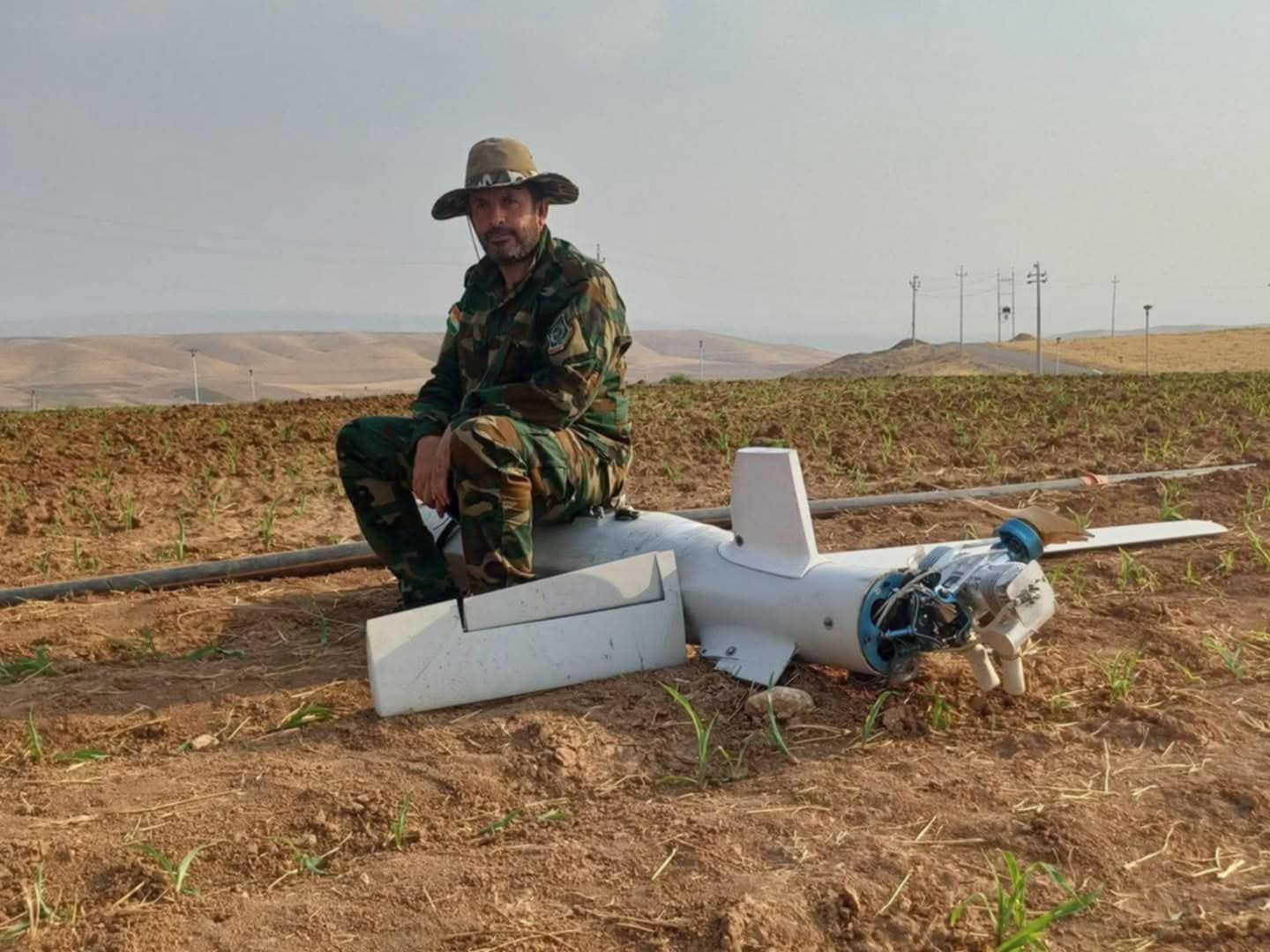Has the KDP’s Counter-Terrorism Just Unintentionally Revealed the Location of an Iranian Kurdish Group?

A sequence of events involving a downed drone appears to have accidentally revealed the operational location of an Iranian Kurdish militant organization in the Kurdistan Region.
The Kurdistan Counter-Terrorism unit, a KDP-affiliated force commanded by Waysi Barzani (Masoud Barzani’s fourth son), issued a statement on July 28th, claiming that a drone had “crashed” in a town west of Erbil province, accompanied by photographs of the wreckage.
Just hours later, fighters from the Kurdistan Freedom Party (PAK), an Iranian Kurdish militant group, released their own photos posing with the wreckage of what they claimed was a drone they had successfully “downed.”
Though the two incidents were reported separately, our investigation confirms they refer to the same drone. The photos released by PAK fighters match the exact location described in the KDP Counter-Terrorism statement. Both sets of images appear to show the same wreckage—located in the agricultural fields of Rizgari sub-district in Khabat district, Erbil province.



This is particularly revealing in light of the 2023 trilateral security agreement between Iraq, Iran, and the Kurdistan Regional Government (KRG), which obliges the KRG to disarm Iranian Kurdish opposition groups based in its territory. While several groups have since been relocated or demobilized, the KDP is widely believed to have shielded PAK, which has now become a de facto KDP proxy with an estimated force of 500 to 800 fighters. As part of this arrangement, efforts have been made to obscure the group’s redeployment sites.
On July 28th, the Kurdistan Counter-Terrorism unit reported that an “explosive-laden” drone had crashed in the Rizgari sub-district of Khabat district, Erbil province. However, photographic evidence of the wreckage reveals an Ababil-3 aircraft—a short-range reconnaissance platform typically supplied to IRGC units and affiliated militias in Iraq, rather than an explosive-carrying variant.

The following day, despite no reports of additional drone incidents, PAK militants released photographs showing themselves with wreckage they claimed to have downed. The debris matches the identical Ababil-3 specifications, and crucially, the backdrop of their photographs corresponds precisely to the agricultural areas of Rizgari sub-district, specifically near Saidan village.
The location holds strategic importance, situated near the Great Zab river. The western bank of this area falls within disputed territories under Iraqi federal control, where Shia militia groups maintain operations. The PAK militants’ photographs clearly show irrigation infrastructure and plains surrounded by hills—topographical features characteristic of the Rizgari sub-district where the Counter-Terrorism unit reported the crash.

The drone’s physical features further confirm it as an Ababil‑3: it has one dorsal and two ventral stabilizers, rectangular wings spanning 3.2 meters, and a two-axis ISR turret mounted beneath the fuselage—all of which match the wreckage shown in both the KDP and PAK images.
What makes this incident more politically charged is PAK’s recent position during the 12-day Israel–Iran war. At the time, it was the only Iranian Kurdish group to publicly call on Israel for direct support, urging Tel Aviv to help them establish a ground presence to push into Kurdish areas of Iran. This unprecedented appeal drew swift and serious warnings from Tehran, prompting the KDP to curtail the activities of Iranian Kurdish factions under its umbrella—PAK included.
Now, ironically, it appears the KDP’s own Counter-Terrorism unit may have inadvertently pinpointed a location where PAK fighters are still operating, undermining the secrecy surrounding their current deployment.









